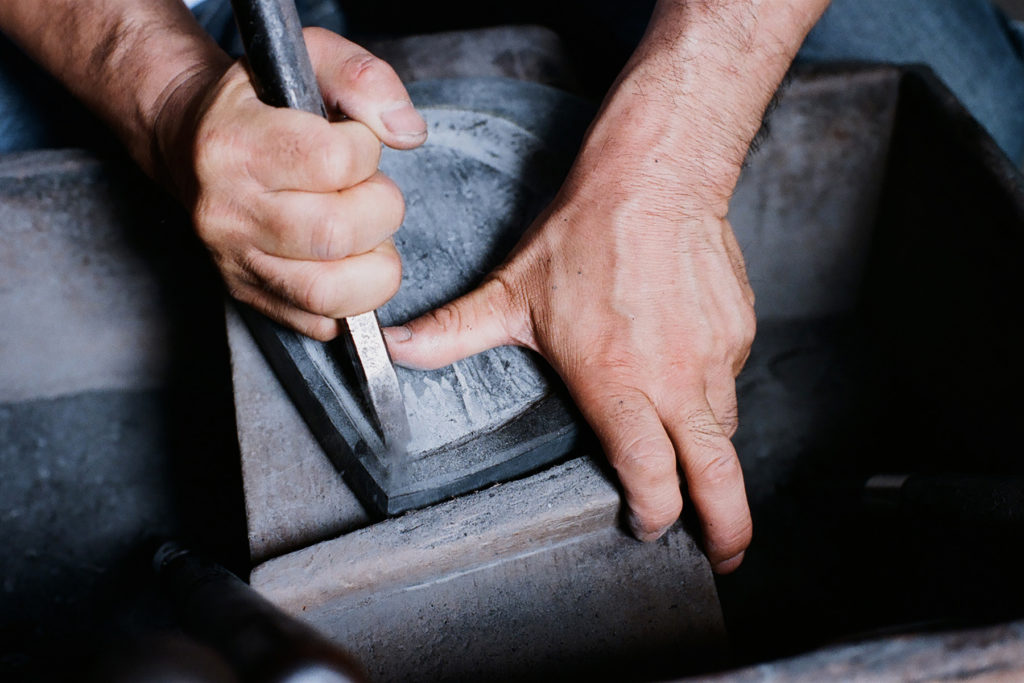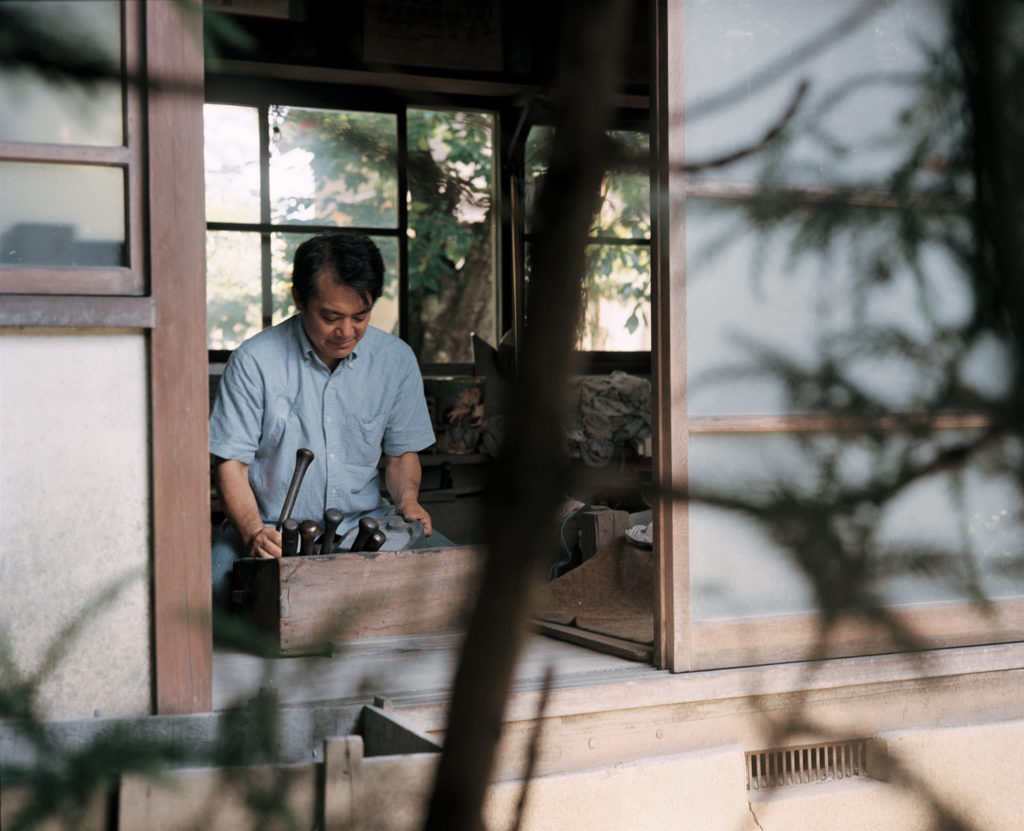Story 02 | Entranced by a Rock
Suzuri are an essential part of Japan’s writing history but they are also an embodiment of Japan’s spiritual history; as instruments for meditation. “If you want to write something pure, something approaching truth, then your mind should be clear. This is what is interesting about Suzuri, it is a tool for self reflection, and I believe it can be viewed as a sculptural item.” Sitting cross legged on a mat, Yataro Amemiya, a 13th generation Suzuri maker, explains his philosophy from the concrete floor of his workshop.
Down the road from the Amehata slate mine, just out of the mountains, is a small house and workshop owned by the Amemiya family. For over 500 years this family has been carving stones into Suzuri. Yataro Amemiya, wide eyed and permanently smiling is devoted to his craft, but he wants it to adapt. “I want to change the thinking about Suzuri, it is a craft object, but it is also a fine art object at the same time.”

It is hard for us to understand today, but historically, Shodo (calligraphy) in Japan had a deeply spiritual function. Borrowing from Chinese ideas about Buddhism, the act of mixing ink for writing became a meditative act; the physical expression of Zen philosophy. Writers grinding the ink stick often found themselves falling into a natural rhythm, and because making ink this way is time consuming that rhythm invoked a state of in-motion meditation. The depth of that state all depends on the look, and feel of the Suzuri. Unfortunately, over the past fifty years Suzuri have increasingly been built by machines using ceramics or plastic; turning them into cheap and ubiquitous items, and over time stripping them of their immaterial values. “People today do not know the value of a good Inkstone, or its connection to the past,” says Amemiya. Unfortunately these values and history are not known easily, it seems.
After graduating from an art university, Amemiya worked briefly for an Italian sculptor in the 1980s. His works from this time were large-scale sculptures, where heavy metal shapes have been bored with large holes. “At first I had separate names; one for my Suzuri work and one for my sculptural works. I thought they were separate, but art and craft are the same. Categories which separate them are meaningless.” It took Amemiya a long time to reach that conclusion. The qualities of stone are not understood easily or intuitively. Least understood is its potential for invoking spiritual states, but to Amemiya this is the key to the Suzuri. Amemiya takes us to his collection of Suzuri, and we see them lined up behind glass. “You can have a totally non-functional Suzuri – an instrument which grinds ink poorly – but it can still easily clear your mind. Or you can have a totally functional instrument which can not clear your mind. It is a balance between physical and spiritual worlds.”
< PAPERSKY no.36(2011)>












